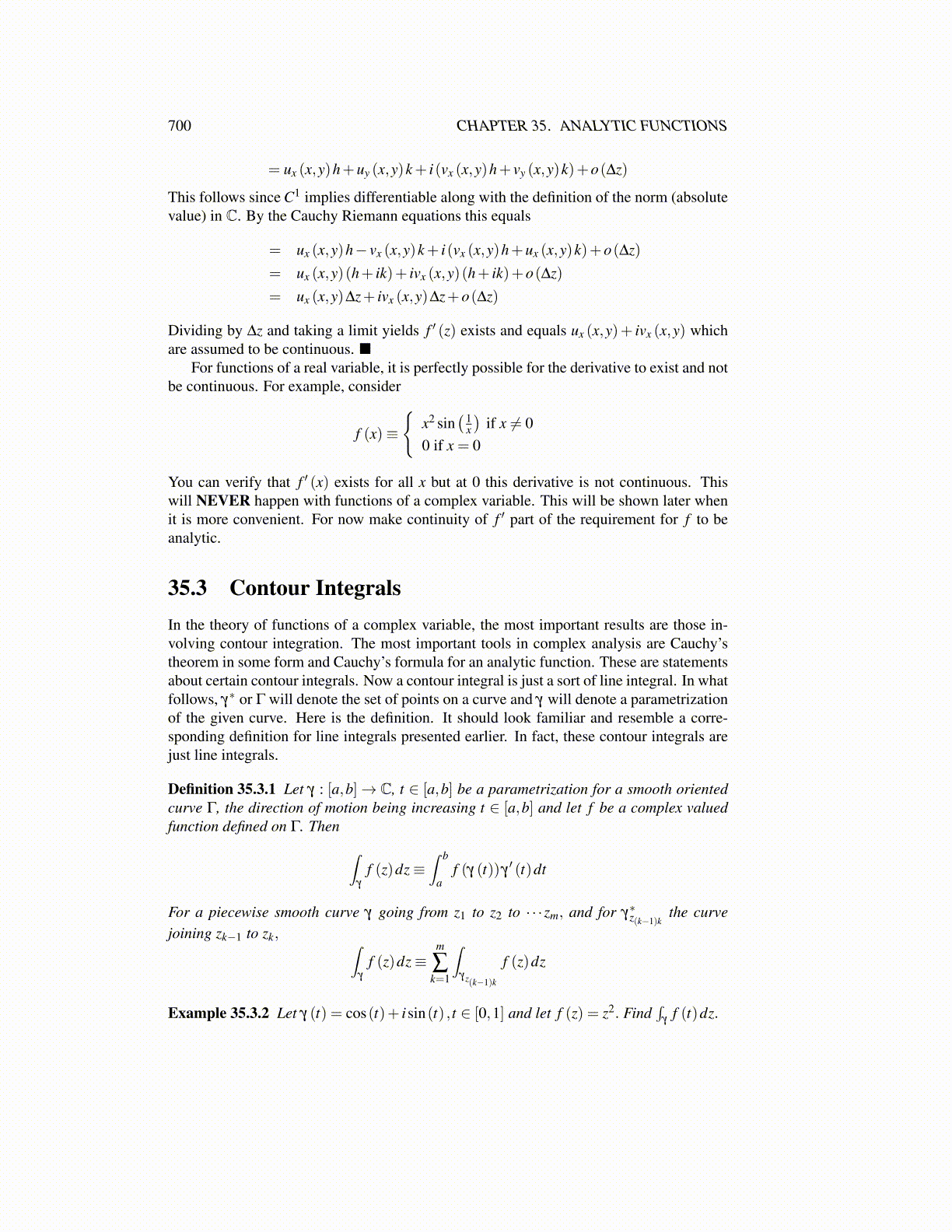
700 CHAPTER 35. ANALYTIC FUNCTIONS
= ux (x,y)h+uy (x,y)k+ i(vx (x,y)h+ vy (x,y)k)+o(∆z)
This follows since C1 implies differentiable along with the definition of the norm (absolutevalue) in C. By the Cauchy Riemann equations this equals
= ux (x,y)h− vx (x,y)k+ i(vx (x,y)h+ux (x,y)k)+o(∆z)
= ux (x,y)(h+ ik)+ ivx (x,y)(h+ ik)+o(∆z)
= ux (x,y)∆z+ ivx (x,y)∆z+o(∆z)
Dividing by ∆z and taking a limit yields f ′ (z) exists and equals ux (x,y)+ ivx (x,y) whichare assumed to be continuous. ■
For functions of a real variable, it is perfectly possible for the derivative to exist and notbe continuous. For example, consider
f (x)≡
{x2 sin
( 1x
)if x ̸= 0
0 if x = 0
You can verify that f ′ (x) exists for all x but at 0 this derivative is not continuous. Thiswill NEVER happen with functions of a complex variable. This will be shown later whenit is more convenient. For now make continuity of f ′ part of the requirement for f to beanalytic.
35.3 Contour IntegralsIn the theory of functions of a complex variable, the most important results are those in-volving contour integration. The most important tools in complex analysis are Cauchy’stheorem in some form and Cauchy’s formula for an analytic function. These are statementsabout certain contour integrals. Now a contour integral is just a sort of line integral. In whatfollows, γ∗ or Γ will denote the set of points on a curve and γ will denote a parametrizationof the given curve. Here is the definition. It should look familiar and resemble a corre-sponding definition for line integrals presented earlier. In fact, these contour integrals arejust line integrals.
Definition 35.3.1 Let γ : [a,b]→ C, t ∈ [a,b] be a parametrization for a smooth orientedcurve Γ, the direction of motion being increasing t ∈ [a,b] and let f be a complex valuedfunction defined on Γ. Then ∫
γ
f (z)dz≡∫ b
af (γ (t))γ
′ (t)dt
For a piecewise smooth curve γ going from z1 to z2 to · · ·zm, and for γ∗z(k−1)kthe curve
joining zk−1 to zk, ∫γ
f (z)dz≡m
∑k=1
∫γz(k−1)k
f (z)dz
Example 35.3.2 Let γ (t) = cos(t)+ isin(t) , t ∈ [0,1] and let f (z) = z2. Find∫
γf (t)dz.